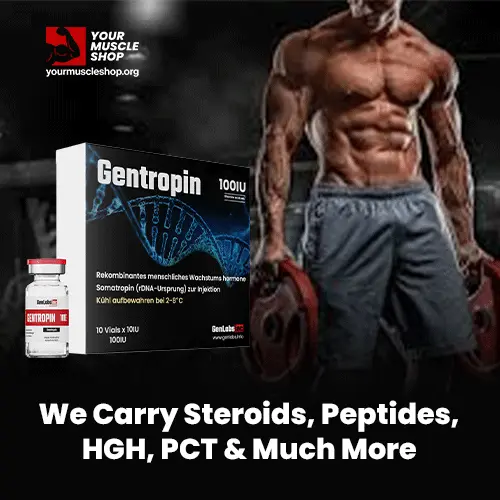Title: Comprehensive Guide to HGH Bodybuilding Cycle: Enhance Muscle Growth and Achieve Optimal Results
Introduction:
Human Growth Hormone (HGH), also known as growth hormone, plays a vital role in the development and regeneration of cells in the human body. It is highly sought after by bodybuilders due to its ability to stimulate muscle growth, increase protein synthesis, and enhance fat metabolism. In this comprehensive guide, we will explore the HGH bodybuilding cycle, focusing on its benefits, dosage protocols, potential side effects, and its specific application in cutting cycles.
1. Understanding Human Growth Hormone (HGH):
a. Role and Function: HGH is a peptide hormone produced by the pituitary gland that stimulates growth, cell reproduction, and regeneration.
b. Benefits for Bodybuilders: HGH offers several advantages to bodybuilders, including increased muscle mass, improved recovery, enhanced fat burning, and improved joint health.
2. HGH Bodybuilding Cycle Overview:
a. Bulking vs. Cutting Cycles: HGH can be utilized in both bulking and cutting cycles, but its applications and dosage protocols may vary.
b. Duration: Typical HGH cycles range from 12 to 16 weeks for optimal results.
c. Dosage: HGH dosages for bodybuilding purposes usually fall within the range of 2-4 IU (International Units) per day, with higher doses generally reserved for advanced users.
3. HGH Cutting Cycle:
a. Goals and Benefits: The primary objective of a cutting cycle is to preserve lean muscle mass while reducing body fat.
b. Combining HGH with Other Compounds: HGH can be stacked with other compounds like anabolic steroids and peptides to enhance the cutting effects.
c. Dosage Protocol: HGH dosage during cutting cycles is generally in the range of 2-4 IU per day, divided into multiple injections. Splitting the dosage into two injections per day is commonly recommended.
d. Duration: Cutting cycles typically last between 8 to 12 weeks, depending on individual goals and tolerability.
4. HGH Cutting Cycle: Nutrition and Training:
a. Caloric Deficit: To achieve optimal results during a cutting cycle, it is essential to maintain a moderate caloric deficit.
b. Macronutrient Balance: Focus on consuming adequate protein, moderate carbohydrates, and healthy fats to support muscle preservation and energy levels.
c. Cardiovascular Exercise: Incorporate regular cardio sessions to promote fat burning and improve overall cardiovascular health.
d. Resistance Training: Maintain a structured weightlifting program to preserve muscle mass and stimulate growth while in a caloric deficit.
5. Potential Side Effects and Risk Mitigation:
a. Water Retention: HGH may cause water retention, but managing sodium intake and maintaining a balanced hormone profile can help mitigate this effect.
b. Insulin Sensitivity: HGH may decrease insulin sensitivity, so monitoring blood glucose levels and adopting a balanced diet can help manage this issue.
c. Other Side Effects: Possible side effects of HGH may include joint pain, carpal tunnel syndrome, and potential effects on natural hormone production. Regular monitoring and consulting with a healthcare professional are advised.
Conclusion:
The HGH bodybuilding cycle, specifically the cutting cycle, can be a powerful tool to achieve lean muscle preservation and fat loss. Understanding the benefits, dosage protocols, nutrition, and training requirements is crucial for maximizing the potential of HGH while minimizing potential risks. As always, it is essential to consult with a healthcare professional or experienced coach before initiating an HGH bodybuilding cycle to ensure safety and optimize results.
Introduction:
Human Growth Hormone (HGH), also known as growth hormone, plays a vital role in the development and regeneration of cells in the human body. It is highly sought after by bodybuilders due to its ability to stimulate muscle growth, increase protein synthesis, and enhance fat metabolism. In this comprehensive guide, we will explore the HGH bodybuilding cycle, focusing on its benefits, dosage protocols, potential side effects, and its specific application in cutting cycles.
1. Understanding Human Growth Hormone (HGH):
a. Role and Function: HGH is a peptide hormone produced by the pituitary gland that stimulates growth, cell reproduction, and regeneration.
b. Benefits for Bodybuilders: HGH offers several advantages to bodybuilders, including increased muscle mass, improved recovery, enhanced fat burning, and improved joint health.
2. HGH Bodybuilding Cycle Overview:
a. Bulking vs. Cutting Cycles: HGH can be utilized in both bulking and cutting cycles, but its applications and dosage protocols may vary.
b. Duration: Typical HGH cycles range from 12 to 16 weeks for optimal results.
c. Dosage: HGH dosages for bodybuilding purposes usually fall within the range of 2-4 IU (International Units) per day, with higher doses generally reserved for advanced users.
3. HGH Cutting Cycle:
a. Goals and Benefits: The primary objective of a cutting cycle is to preserve lean muscle mass while reducing body fat.
b. Combining HGH with Other Compounds: HGH can be stacked with other compounds like anabolic steroids and peptides to enhance the cutting effects.
c. Dosage Protocol: HGH dosage during cutting cycles is generally in the range of 2-4 IU per day, divided into multiple injections. Splitting the dosage into two injections per day is commonly recommended.
d. Duration: Cutting cycles typically last between 8 to 12 weeks, depending on individual goals and tolerability.
4. HGH Cutting Cycle: Nutrition and Training:
a. Caloric Deficit: To achieve optimal results during a cutting cycle, it is essential to maintain a moderate caloric deficit.
b. Macronutrient Balance: Focus on consuming adequate protein, moderate carbohydrates, and healthy fats to support muscle preservation and energy levels.
c. Cardiovascular Exercise: Incorporate regular cardio sessions to promote fat burning and improve overall cardiovascular health.
d. Resistance Training: Maintain a structured weightlifting program to preserve muscle mass and stimulate growth while in a caloric deficit.
5. Potential Side Effects and Risk Mitigation:
a. Water Retention: HGH may cause water retention, but managing sodium intake and maintaining a balanced hormone profile can help mitigate this effect.
b. Insulin Sensitivity: HGH may decrease insulin sensitivity, so monitoring blood glucose levels and adopting a balanced diet can help manage this issue.
c. Other Side Effects: Possible side effects of HGH may include joint pain, carpal tunnel syndrome, and potential effects on natural hormone production. Regular monitoring and consulting with a healthcare professional are advised.
Conclusion:
The HGH bodybuilding cycle, specifically the cutting cycle, can be a powerful tool to achieve lean muscle preservation and fat loss. Understanding the benefits, dosage protocols, nutrition, and training requirements is crucial for maximizing the potential of HGH while minimizing potential risks. As always, it is essential to consult with a healthcare professional or experienced coach before initiating an HGH bodybuilding cycle to ensure safety and optimize results.









